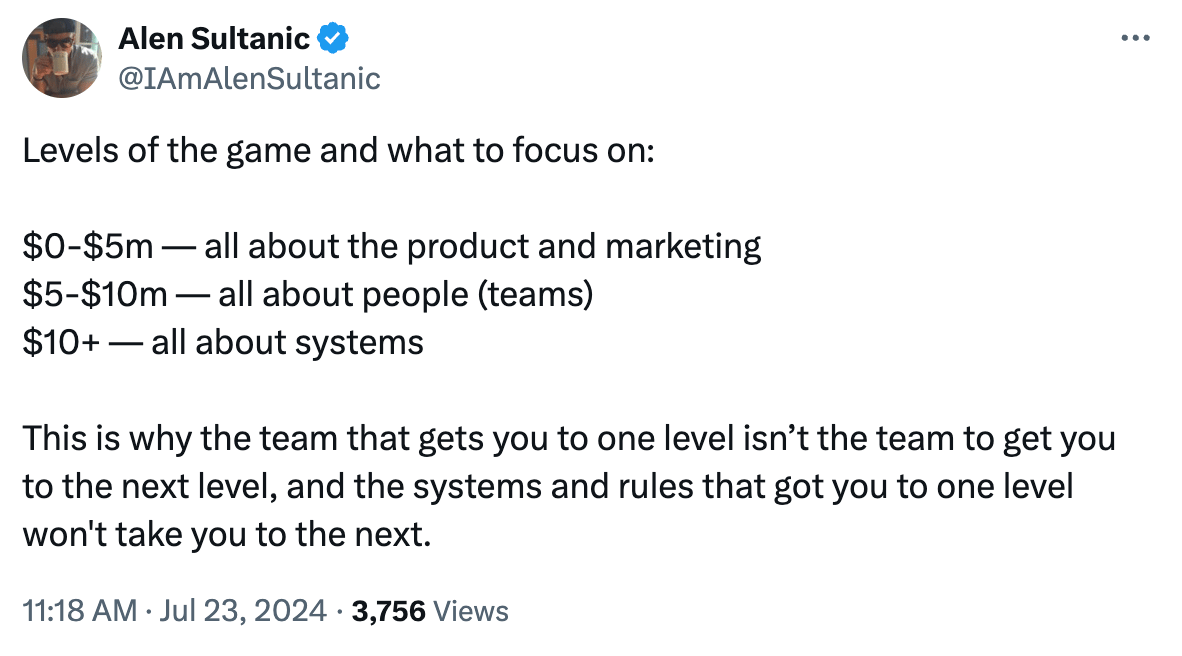- Passionate Income
- Posts
- Why Nobody's Buying Your Thing
Why Nobody's Buying Your Thing
And how to fix it.
1,405 Words | 5 Min 53 Sec Read

Today we’ll be discussing why most marketing and sales campaigns fail.
We'll also dive into what separates the winners from the losers, and how you can clone their strategies to increase sales of your product or service.
Let’s dive in.
Learn about a platform focused on payment processing, financing clients, deal closing, financial management, and affiliate management that enables coaches and digital entrepreneurs who sell courses and services online, to scale their business.
They work with major brands, including Tai Lopez, Alex Hormozi, and Ryan Pineda, that have scaled their businesses to millions a month in revenue.
I, the founder of Passionate Income, filmed a video sharing my experience…
Watch it here.
If you're pouring your heart and soul into marketing your thing, but not getting anywhere close to your sales targets...
Today's issue is for you.
See, yesterday I started reading the book: Make 'Em Beg to Buy From You
*Not an affiliate link
Inside, the author opens by discussing why most Internet Marketers struggle to make sales / generate revenue. While I encourage you to read the book yourself, the short version is as follows.
Using the analogy of a marriage proposal, the author says asking someone to marry you without laying the proper foundation first is unlikely to be successful.
On the flip side, if you've been dating for years, talked about getting married before, etc., it's basically guaranteed you'll get a "Yes."
Now, this isn't some revolutionary idea.
If you have any experience with professional sales and marketing, you're well aware of the concept of Lead Nurturing. In fact, between your content marketing, social media, etc., odds are you're already doing this.
So why isn't it working?
According to the author, most marketers go about lead nurturing wrong.
From relying on personality too much (like we see with guru types / Personal Brands), to selling to future desires instead of current needs, here are the five areas the author says you should focus on to maximize your sales.*
*I'll keep these short to respect the author's intellectual property, and highly encourage you to purchase and read the full book.
**This book is designed for people who sell products and services for $500 or more, meaning your offer is not an impulse purchase and requires some level of persuading to sell.
#1 - Present Pain
By far, one of the biggest mistakes entrepreneurs make is not understanding what problem their product/service solves on a deep, profound level.
Ask most business owners/marketers what problems their target audience has and they'll respond with something like:
They're unhappy with their weight
They want to increase revenue
They want to meet their soulmate
Etc
But let me ask you, how hard does the following headline hit:
"Is Your Business Looking to Increase Revenue Fast?"
Odds are this kind of amateurish copy rolled off your psyche like water rolling off a duck's back. Why?
Because it's toothless. It doesn't have any umph.
And the reason it's so weak is because it's generic.
Now, imagine a hyper specific problem that points to a current problem the prospect is worried about right now, today:
"Does your partner veer their phone's screen away from you so you can't see what they're up to? Are you convinced they're cheating, but don't know how to prove it?"
If someone's dealing with a cheater who's hiding their phone's screen when the two of them are together, this head line is going to pierce through their psyche like an arrow from Robinhood.
Where marketers go wrong is trying to guess what the answer instead of doing the hard work of talking to prospects so they can get down to the real answer.
As we say in copywriting: "It' a mess to guess."
Meaning, you can only achieve this level of understanding by talking to your prospect's about their pains. And not just talking, but probing deep to understand how the pain manifests in their life (something the author refers to as the Symptoms of their Present Pain).
From there, once you get clear on both their pain its symptoms, it's time to unveil your plan for helping them get what they want.
#2 - Your Plan
Once you've gotten someone's attention using Step #1, it's time to explain how your thing helps them get what they want.
Commonly referred to as a blueprint, methodology or Signature System (cringe), your plan is all about how your thing works.
Sounds simple enough right?
Believe it or not, most people get this wrong.
Imagine you're trying to attract SaaS customers and for the last six months you've poured $20,000+ into Meta ads and agencies with little to show for it. And imagine we get on a sales call and I tell you:
"Ya know Bob, we're having great results helping SaaS companies use Meta ads to get customers."
If you're like most people, you're initial reaction is to run for the hills. Why?
Because you've already tried it, failed with, and developed a bias that it doesn't work (and will likely never work).
On the flip side, if you've never done Sponsored Newsletter Ads, and I show you evidence they're working super well to attract SaaS customers, you'll probably hear me out.
Mainly because you haven't developed a bias that XYZ thing I'm trying to sell you "doesn't work" (which, in turn, makes you more open to trying it).*
*A concept Russell Brunson refers to as New Opportunities vs Improvement Offers in his DotCom Secrets book.
So how do you make your offer new and exciting?
First, if what you're selling is in fact new, all you have to do is explain why your mechanism / technology / way of doing things is superior to the old way(s) your prospects have tried and are currently struggling with.
Admittedly this will take some copywriting skill, and require that you appeal to both logic and emotion. But when done right, it can be highly powerful (most 7-8 figure info product offers involve "new" ways of doing things).
On the flip side, if what you're selling is old news (e.g. SEO services, etc.), you need to find a way to make it seem new. How?
There are a variety of ways you can do this.
On a surface level, you can use world play and semantics to position your product or service as new and exciting. This is the easiest option as it requires minimal effort, but does not add any true value to your offer and the strategy can easily be cloned by your competitors.
On the opposite side of the spectrum, you can build a legitimate moat around your business by:
Developing an algorithm or software nobody else has access to
Hiring an elite performer whose credibility will make your methodology/system stand out
Paying top dollar to get access to intellectual property or software your competitors are not willing to spend money on
And so on
Sadly, most of these methods require capital and/or access to top 0.1% performers. Which the average person just doesn't have.
With that said, there is a middle ground.
For example, you could customize an AI and integrate it into your SOPs to deliver better results (allowing you to create a new name for your way of doing things while legitimately increasing the value of your offer).
In conclusion, the once you figure out what someone's pain is, you can't just try and sell them any old offer.
Instead, it's critical you position your thing as a "new and exciting" (author's words) way of achieving the outcome. In particular, one your prospect has never tried before.
Then, once you've done that, it's time to dive into the third P.
Which we'll discuss in our next issue, as this one has gone plenty long already.
Look out for that issue on Monday.
💡 Takeaway: If you're struggling to hit your revenue goals, you likely have a sales and marketing problem. However, by getting clear on the Present Pain your prospect is struggling with - and presenting a plan that gets them excited - you set yourself up for improved sales success.
🎁 Resources:
FREE COURSE: Build a Faceless IG Page (from a guy with 10M+ followers)


